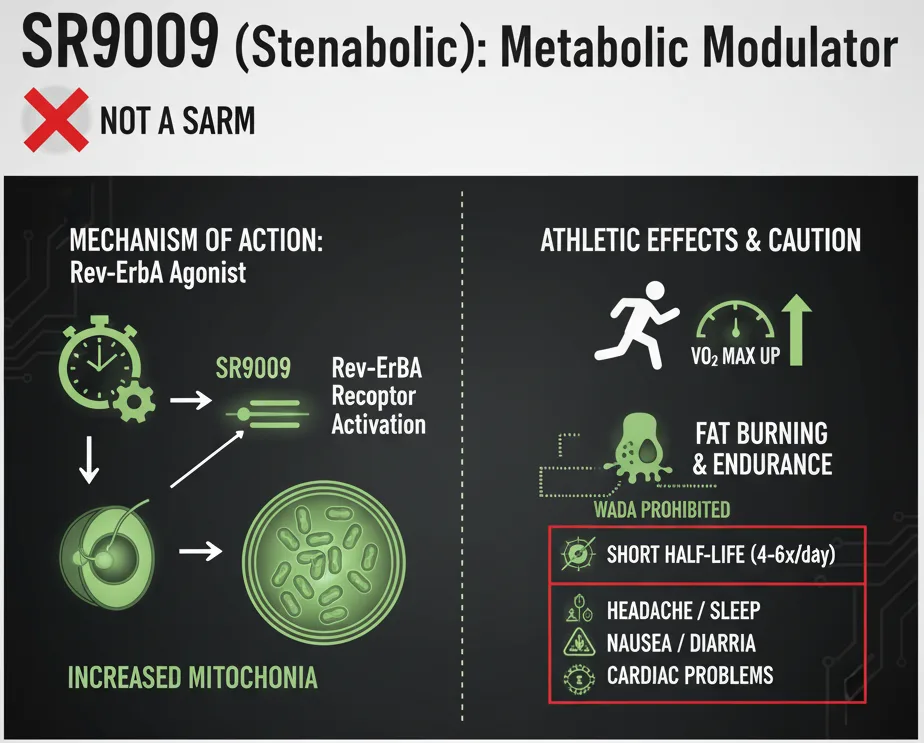SR9009, also known as Stenabolic, is a synthetic compound that has gained attention in the athletic and bodybuilding communities for its potential to enhance metabolic function. It is often mistakenly classified as a Selective Androgen Receptor Modulator (SARM) or an anabolic-androgenic steroid (AAS), but it is neither. Instead, it is a unique type of drug known as a Rev-ErbA agonist.
Mechanism of Action: The Circadian Rhythm Connection
SR9009 was developed by Professor Thomas Burris of the Scripps Research Institute as an agonist of the Rev-ErbA nuclear receptor. This receptor plays a critical role in regulating the body's circadian rhythm, which controls the sleep-wake cycle and various metabolic processes. By activating Rev-ErbA, SR9009 essentially "reprograms" metabolic function, increasing energy expenditure even at rest. Professor Burris also developed a similar compound, SR9011, which works through the same pathway.
This metabolic modulation leads to several key effects:
Increased Mitochondrial Activity: SR9009 boosts the number and activity of mitochondria in skeletal muscle. Mitochondria are the "powerhouses" of the cell, and an increase in their count enhances the muscle's ability to use oxygen and produce energy.
Enhanced Endurance: By increasing mitochondrial efficiency and metabolic rate, SR9009 significantly improves exercise capacity and VO2 max, which is the maximum rate of oxygen consumption during intense exercise.
This makes it a compound primarily used for endurance and performance enhancement, not for building muscle mass directly.
Fat Burning: The increase in metabolic activity forces the body to burn more calories and fat for energy, even without changes in diet or exercise. This makes it a potent tool for fat burning.
Usage, Prohibitions, and Side Effects
SR9009's primary use is for enhancing endurance and promoting fat loss. It is not an anabolic agent, meaning it will not directly build muscle mass or cause common steroidal side effects like hair loss in women. However, it is a potent performance-enhancing drug and is prohibited by the World Anti-Doping Agency (WADA), though its detection remains challenging.
Due to its short half-life, SR9009 must be taken multiple times a day—typically 4 to 6 times daily—to maintain a consistent effect. Recommended dosages often range from 25-50 mg per day, although a safe or effective dose for human consumption has not been established through clinical trials.
The use of SR9009 is associated with several reported side effects:
Gastrointestinal Issues: Users commonly report nausea, vomiting, and diarrhea.
Neurological Effects: Headaches and sleep disturbances are frequently mentioned.
Cardiac Problems: While less common, cardiac issues have been reported.

